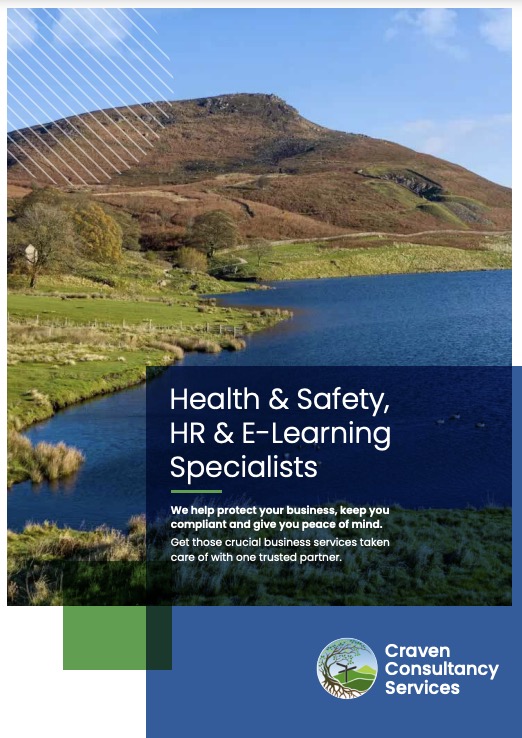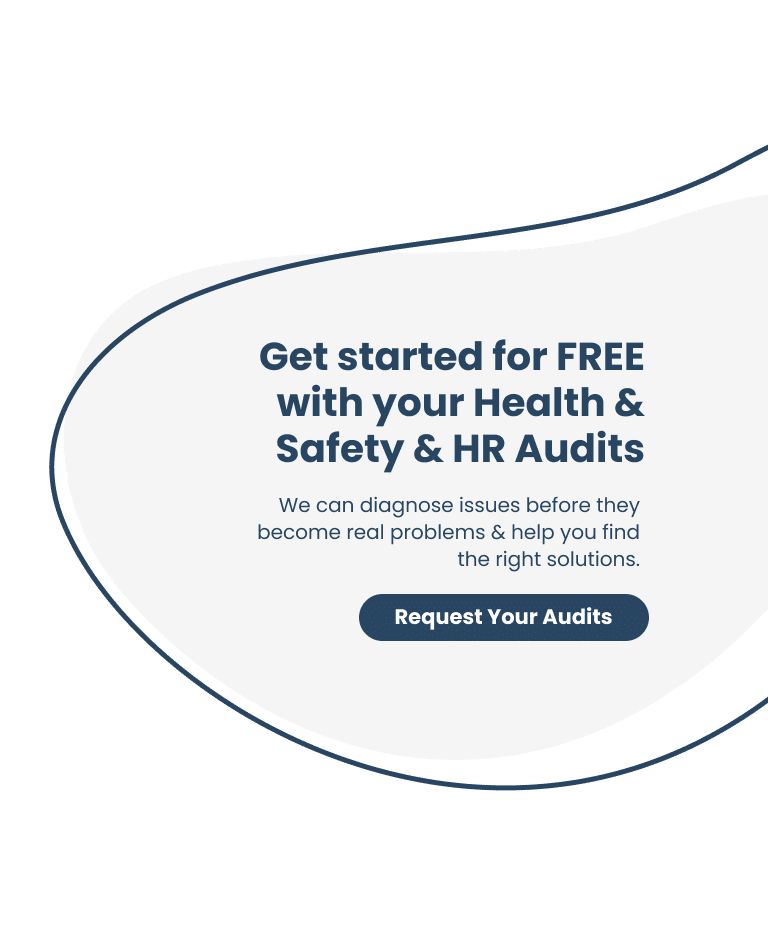A Simple Guide
Sadly, you can’t press a magic button to prevent staff absence. But, with a combination of tools, you can take steps to minimise it. Developing effective return-to-work programmes, helpful workplace adjustments and offering flexible or hybrid working form part of an effective attendance management strategy. Employers should remember that most absence is genuine and that employees often need recovery support even after their return to work from illness.
The UK legal position
Used properly, the Acas Code of practice on disciplinary and grievance procedures, and the employer’s own absence management and other procedures, provide the main tools for addressing unacceptable absence.
Disability discrimination
Employers may need to make ‘reasonable adjustments’ under the Equality Act 2010 to support employees with disabilities or health conditions. For more on addressing these issues, see our factsheets on workplace disability, stress and mental health.
Create policies that align with UK guidelines to positively manage absence at work
Sickness Absence Policy
- Policies should clearly explain the rights and obligations of employees when absent due to sickness. Employers must inform staff of terms and conditions relating to sickness or injury, including sick pay. For example, policies should:
- Provide details of contractual sick pay terms and their relationship with statutory sick pay.
- Explain when and who employees should notify if they are not able to attend work.
- Include provisions for return-to-work interviews.
When your people call in sick?
Your response when a staff member calls in sick can make a big difference to how they feel about their work.
Communicate your reporting practices
A clear, well-communicated reporting procedure for when a member of staff calls in sick will help to ensure you get the information you need to keep the service running and tackle any future problems. Making staff aware of the reporting procedure will help to avoid any misunderstandings.
Consistently gather key information
Always ask your staff the following questions:
- What’s the reason for the absence?
- How long do you think you’re likely to be off?
- Is there any work you’ve been doing that needs to be picked up while you’re off?
Your organisation’s sickness absence policy may have suggested questions that you should ask.
Depending on the reason they give, you may also want to find out:
- Are there any adjustments that you could make that would enable to employee to come to work?
- If the illness is infectious, is there a specific period of time that they need to remain off work once they are symptom free?
- If the reason for absence is related to a mental health issue, could you refer them to a counselling service/employee assistance programme (EAP) (if you have this available)?
- If they are fit to work but physically unable to come in, is there another area they can work in ?
It is your responsibility to maintain records of sickness absences, including conversations with staff while they are off sick and any meetings you have following those absences.
Keep in contact
If your employee is going to be off for more than a day you will need to discuss how often you will keep in touch and who will contact who. Knowing when you’ll next be in touch will reassure them and enable you to:
- review whether you can do anything within the organisation to support them
- plan how to cover their workload and keep the service running
- discuss dates and options for your staff member’s return to work.
Consider reasonable adjustments
Usually staff will be able to return to their role and work environment. However, you may need to ask if any adjustments could be made to allow them to return to work and/or prevent further absences. The sooner you have this conversation, the more time you will have to arrange for the support, equipment or adjustments needed. Making adjustments could also mean your staff member could return to work sooner.
Return to work Meeting (Chat) after every absence
When carried out effectively, return to work meetings are proven to be the single most effective measure for reducing short-term sickness absence. They indicate to employees that their absence was noticed and that they were missed, and that the employer wants to take the time to find out how they are. They also serve to indicate that managing sickness absence is a priority for the employer. Below we highlight some key aspects to consider when conducting a return to work meeting.
The return to work meeting is an opportunity to confirm the reason for an employee’s absence and gives you the opportunity to discuss with your employee how they are, and if there is anything you can do to support them in the workplace. Reassure the employee that they were missed, and that you and the team are glad they have returned.
A return to work meeting should be carried out after every instance of sickness absence – even one day. Shorter frequent absences could mask a health concern which may go unnoticed if return to work meetings are not conducted.
To be effective, return to work meetings should be carried out in a fair and consistent way, and approached in a supportive way. They will usually be informal and brief.
Frequent sickness
Spotting problems early will enable you to put the right support in place.
As a manager, it is your responsibility to review absence history and discuss any problems with your staff. Identifying potential problems early will enable you to put the right support in place to minimise future absences.
Know what you’re looking for
Short-term sickness is absence that lasts less than 28 calendar days. Everyone has short-term sickness absence during their working lives, often because of common illnesses such as colds and flu. However, frequent, ad hoc absence can, indicate an underlying issue with a staff member or team.
When reviewing absence history, look for patterns to the absence, for example, a collection of Fridays or Mondays or days after a bank holiday. Also look for themes in the reasons given for absence and review any fit notes for recurring information.
Discuss what you find
Where a pattern is identified, speak to the individual about it to see if there is any underlying reason for the absences. Often, just having a conversation is enough to alert staff to the need to address any underlying causes or behaviour. Discuss how they approach health and wellbeing and refer them to any initiatives your organisation supports for health and wellbeing, for example, staff counselling, weight management, exercise classes or discounts for gyms.
In some cases, however, you could have uncovered an underlying health or mental health problem, difficulties within the team or a problem with the working environment. Putting the right support in place early, e.g. referrals to occupational health or physiotherapy available, can help to minimise any potential future absence.
If no underlying issue is evident, you should be clear with your staff member that their attendance needs to improve, how this will be measured, and the consequences if it does not. You may need to refer to your organisation’s sickness absence policy.
Monitor the situation
Keep track of whether an absence pattern is improving or getting worse and look out for any unusual patterns of absence, e.g.if a staff member is experiencing more absences, or more frequent absences than usual. Your observations could enable further discussions and identify emerging issues.
Be sensitive and supportive
Adapting your approach depending on what you find, and your staff member’s reaction, should enable you to be sensitive where necessary and find the right mix of supportive and firm. You need to approach such situations as a line manager and not a clinician. It is important to be mindful of the cost and effects of frequent absence on the workload and the team whilst remembering that there may be personal or sensitive circumstances affecting absence.
If you notice someone is becoming withdrawn and quiet, create a suitable confidential environment to tell them what you have noticed, ask them if they are OK and offer them the opportunity to discuss things.
Long term sickness
Your role is to support your staff to maintain a connection with the workplace.
Long-term sickness absence is defined as a continuous period of absence lasting more than 28 days. The employee must give you a ‘fit note’ (formerly a ‘sick note’) if they’re absent for more than seven days. Hospital doctors or GPs provide these, but may charge a fee if a fit note is requested before seven days. The fit note will say the employee is either ‘not fit for work’ or ‘may be fit for work’.
If the fit note says the employee ‘may be fit for work’, you should discuss any changes with the employee that might help them return to work, such as different hours or tasks. You can get support from your occupational health (OH) provider if you need help and advice on making reasonable adjustments.
Keep in contact
It is important to maintain regular contact with your employee when their absence becomes long term. This will allow you to keep track of their progress and will also provide an important connection for your staff member back to the world of work.
Agree with the employee how and when you will catch up and how they will keep you informed of any developments in their treatment and recovery. You want them to feel that you are sympathetic to their situation, but that you are also keeping them under review so you can support them back into the workplace.
As their manager, you should be aware of what the next step is for the employee, such as a GP review or hospital appointment. Your aim should be to facilitate their return to work, and your staff member should understand this aim.
Fit note and sick note
The ‘Fit Note’ is usually a written note issued by GPs or consultants working in conjunction with Occupational Health (OH), detailing how an employer can help the employee return to work after a period of absence. It can also be used a statement of not being fit for work. At the GPs discretion it may also contain other pertinent information on the condition of your employee which may affect their ability to work, with suggestions of ways to support them.
There can be confusion around fit notes where managers automatically believe it means an employee is well enough to come back to work – this is not always the case as the fit note can actually be used for one of two things: to state that an employee might be fit to return to work after a period of ill health (may be fit for work), or to sign the person off work sick completely for a defined period of time (not fit for work).
You should receive a copy of the fit note as soon as possible once your employee has received it, so that you know what the reason for their absence is, if there is anything you can do to support them to return to work and set up a return to work plan. Your finance department will usually need this for payment purposes so you should familiarise yourself with your local procedure for this.
If your employee does not provide a copy that details they are unfit for work, then they would be classed as being on unauthorised absence and you would need to speak to your HR department for further support. It is in the employee’s best interest to be open and honest about this, so you can provide or arrange for the support they need.
Where the fit note marks your employee as ‘may be fit for work’, it means the GP believes that returning to work will aid in their recovery and should also provide details on how to get the employee back into work. It’s important that you work with your OH service to ensure everything is covered. Often the fit note may detail alternative duties for the employee until they feel fit to undertake all their usual duties and this should be agreed by all parties.
GP’s are often not familiar with their patients work or work environment so it may be possible for your local OH department to suggest alternatives to support staff to return to work. Where you feel this may be an option you should seek further advice from your OH department who would be responsible for contacting your employee to get the required consent and liaising with the GP.
Using an Occupational Health (OH) Service
Occupational Health services are all about making sure your staff are fit for the work they do, and how their work affects their health. Organisations do not legally have to provide OH services, but those that do can offer support and advice in several areas:
As a line manager you should focus on the impact the employee’s health is having on their ability to undertake their role, as opposed to the detailed nature of the health complaint and any treatment they may be receiving. OH can provide you with further support and guidance around how to support your staff and any reasonable adjustments which could be made to allow the employee to remain in the workplace or return to work.
Make sure you discuss with employees the reasons for referring them to OH, so that they understand and are fully aware of the reasons for referral. The employee should also be given a copy of the referral letter.
You need to be aware that confidentiality principles place constraints on OH professionals in regard to the release of the personal medical information of staff. These apply in all cases.
Despite the increasing use of OH and increasing partnership working employees can still be reluctant or concerned about being referred to OH. It is useful to have this in your mind so that you can reassure your employee about the appointment and how they can help. This may help to reduce any anxiety your team may experience.
Ill health retirement
Sometimes one of your employees may become very ill and permanently incapable of doing their current job. In these situations you should always look at options for redeployment or alternative duties in the first instance. However if these options are not possible, your employee may apply for ill health retirement.
Health and safety
Health and safety is all about minimising illness or injury in the workplace. It covers many related aspects such as policies, accident reporting, potential hazards and risk assessments, manual handling, violence towards staff from patients, infection control, needle stick injuries and many more. It is the responsibility of all staff to safeguard the health and safety of the workplace and the team.
Prioritise Workplace Wellbeing & Engagement
Investing in employee wellbeing can lead to increased resilience, better employee engagement, reduced sickness absence and higher performance and productivity. However, wellbeing initiatives often fall short of their potential because they stand alone, isolated from the everyday business. To gain real benefit, employee wellbeing priorities must be integrated throughout an organisation, embedded in its culture, leadership and people management.
Effective management
There are simple ways to manage your team more effectively. They don’t require time or money, and most you can start right away. Supporting your staff by saying thank you for a job well done and creating a culture of openness can make a difference in promoting wellbeing among your staff. Make time for positive reinforcement for example, say ‘Thank you’, or ‘Tough shift, thanks for your support’ etc.
Research suggests that three in four organisations agree that providing early intervention strategies for employee wellbeing can help avoid stress, burnout and absenteeism, and indeed, pre-emptive strategies have been found to achieve higher returns than those brought in later when there are issues that require tackling.
With a massive 90% of people admitting they never cite stress, anxiety or depression as reasons for their absence, absence data should be analysed carefully when considering these things as potential causes and with plans to deal with presenteeism as part of this. A strategic approach to asking employees for feedback and how they can be better supported is a good way to encourage open communication and together with absence data, can help organisations address any challenges before they escalate.
For small businesses ideally, we would suggest implementing the following (as a start);
- Stress Risk Assessment – Legal Requirement
- Wellbeing in the Workplace Policy
- Employee Assistance Programme (EAP)
https://cravensafetyservices.co.uk/craven-hr-services/employee-wellbeing/
How can a SME Positively & realistically Support Mental Health & Wellbeing at Work ? – Craven Consultancy Services (cravensafetyservices.co.uk)
Burnt Out

Burnt Out is an experience long-term stress in your job, or when you have worked in a physically or emotionally draining role for a long time.
Common signs of burnout:
Feeling tired or drained most of the time
Feeling helpless, trapped and/or defeated
Feeling detached/alone in the world
Having a cynical/negative outlook
Self-doubt
Procrastinating and taking longer to get things done
Feeling overwhelmed
I’m an employer, what can I do about this?
You could use a Wellbeing Plan as a tool to help you identify what good wellbeing looks like for you, as well as what it looks like when things aren’t so good. You could share this with your team so that you can help to look out for each other.
https://mentalhealth-uk.org/burnout/
Embrace Flexible Working
Be Flexible – Life is busy. Some employees take unauthorised time off because they just don’t have enough time to deal with all their commitments. That’s why giving employees the opportunity to work more flexibly can work so well. It works by helping them free up time so they can be more flexible around their commitments.
Research suggests that access to remote or more flexible working can help with managing absence at work. It shows that more flexibility over where and how we work can have a dramatic impact on employee wellbeing, productivity, innovation, and inclusion and can decrease cases of burnout by more than a quarter (26%).
Organisations that trust employees with the autonomy to choose how best they’re able to work and encourage them to bring their whole selves to their role are likely to see improved levels of engagement, retention and wellbeing as well as reduction in sickness absence, absenteeism and presenteeism.
#Flexfrom1st – flexible working to be a day one right to request – Craven Consultancy Services (cravensafetyservices.co.uk)
Communication
Many employees take sick leave because they’re unaware of the options available to them. Use your onboarding programme, regular one-to-ones and a clear absence management tracking tool to make sure your staff understand their options.
Provide line manager Training & Support
Effectively managing absence at work requires those responsible to have a good understanding of the legal and disciplinary aspects of absence, how to use your absence management systems and how to conduct return-to-work interviews as well as awareness of the more sensitive mental health and wellbeing issues they may need to raise and discuss with their teams.
Absence Management Self-Service Software
Take the stress out of absence management and improve employee productivity with Craven HR’s online absence management software. It’s intuitive, clean and easy to use, giving you a holistic understanding of employee absence.
Craven HR’s software delivers efficient absence management solutions so you don’t have to. All employee absences will be in one secure place, so you can manage staff and solve problems effortlessly.
Understanding absence can help inform workforce scheduling, absence strategies and wellbeing programmes, and ensure an accurate payroll.
Key figures for Great Britain (2021/22)
- 1.8 million working people suffering from a work-related illness, of which
- 914,000 workers suffering work-related stress, depression or anxiety
- 477,000 workers suffering from a work-related musculoskeletal disorder
- 123,000 workers suffering from COVID-19 which they believe may have been from exposure to coronavirus at work
- 2,544 mesothelioma deaths due to past asbestos exposures (2020)
- 123 workers killed in work-related accidents
- 565,000 working people sustained an injury at work according to the Labour Force Survey
- 61,713 injuries to employees reported under RIDDOR
- 36.8 million working days lost due to work-related illness and workplace injury
- £18.8 billion estimated cost of injuries and ill health from current working conditions (2019/20)
Health and safety statistics 2022 (hse.gov.uk)
Need help with proactively and positively Managing Staff Absence? Get in touch now to see how we can help you.














